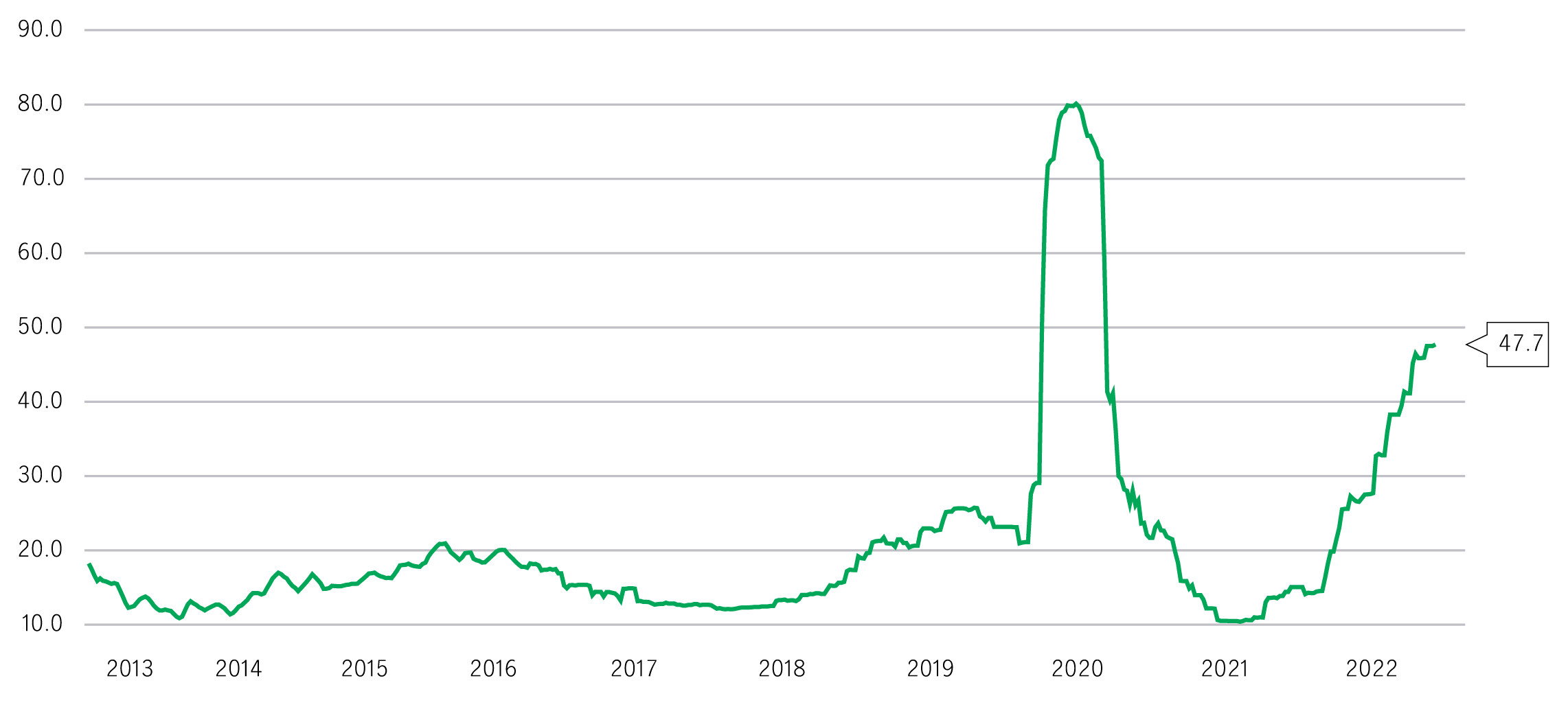
Macroeconomic Strategy Team
10 January 2023
As we consider the year ahead, we expect to see a game of two halves, where challenging conditions will prevail in the first half before improving through the second half. The aggressive pace of monetary tightening and its associated lagged effects should drive a synchronised global growth downturn in the first half.
We expect global growth to slow materially and come in substantially lower than the below 3% threshold that the International Monetary Fund uses to define global recessions. A downturn of this magnitude—excluding the COVID-19 shock and the global financial crisis—could make 2023 the worst year for global growth since the 1980s. We expect the economic slump to become more apparent in the first half of the year, with a cyclical bottom only occurring in Q2/Q3.
Our analysis shows that most advanced economies are likely to experience a recession in the year ahead. Given that the U.S. Federal Reserve (Fed) has been hiking rates at the fastest pace in decades, the U.S. economy will be facing the lingering effects of substantial policy tightening, with real rates rising while inflation eases gradually.
Market’s view on the probability of a global recession (%)

Source: Bloomberg, Macrobond, Manulife Investment Management, as of 13 December, 2022.
Economic weakness will be particularly pronounced in interest-rate-sensitive economies such as Canada, Australia, New Zealand, and the United Kingdom—these economies would almost certainly be confronting downside risks as a result of spillovers from their respective weaker housing markets. In Continental Europe, the growth drag will predominantly stem from particularly large negative terms-of-trade shocks.
Meanwhile, slowing final demand from advanced economies, elevated inflation, and a still-strong U.S. dollar (USD) will likely morph into material headwinds for growth in emerging markets (EM). In mainland China, a bumpy exit from zero-COVID policy, weak external demand, a still struggling property sector, and insufficient policy support look set to extend the country’s below-trend GDP into 2024. That said, the prospects for the rest of Asia’s economies are a little more mixed: We expect weak foreign demand to weigh on export growth, but North Asia is particularly vulnerable in light of a likely inventory overhang. On the other hand, weakness in ASEAN countries will likely be cushioned by a strong reopening bounce and relatively healthy household balance sheets.
Amid a macro backdrop characterized by elevated global inflation, uncertainty over when Fed rates might peak, and rising odds of a global recession, the first half of 2023 could bear witness to a series of sharper—and longer—bouts of market volatility. Thankfully, the picture does brighten slightly in the second half, during which these headwinds are likely to moderate, ushering in more conducive conditions for financial markets.
Greater China Equities: 2H 2025 Outlook
The latest Greater China Equities Outlook highlights how our investment team navigates global uncertainties and invests through the lens of our investment framework via the “4A” positioning: Acceleration, Abroad, Advancement, and Automation.
Takeaways from China’s NPC Meeting & upcoming drivers for Greater China equity market
In addition to the recent breakthroughs in AI and humanoid robot development, we observe other positive catalysts that further support the region’s market.
Five macroeconomic themes for 2025: a global economy in transition
2025 is shaping up to be a year of transition. With that in mind, we explore five key forces that we believe will drive the global economy and markets this year. Return to this page periodically for additional timely insight and resources to help guide you through 2025.
Asian Fixed Income: Are we at a turning point?
This outlook analyses the near-term tailwinds propelling returns in Asian fixed income, as well as the structural fundamentals and shifting geopolitical trends that could support the asset class over the long-term.
Midyear 2025 global macro outlook: what’s changed and what hasn’t
More forceful-than-expected government policy decisions, particularly by the United States, have swiftly overtaken some of our early 2025 views. Global trade issues and deglobalization have indeed come to the fore, with knock-on effects for many trade-sensitive emerging markets. Elsewhere, capital markets the world over are contending with a big wave of government debt supply, which is driving global bond yields higher.
Greater China Equities: 2H 2025 Outlook
The latest Greater China Equities Outlook highlights how our investment team navigates global uncertainties and invests through the lens of our investment framework via the “4A” positioning: Acceleration, Abroad, Advancement, and Automation.